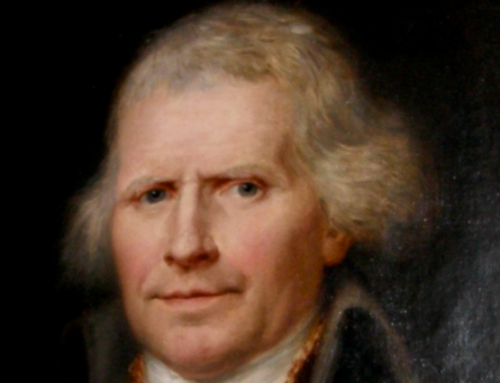The California State University system is long overdue for a revision to its general education program. But why not leave politics out of it and work at cultivating a rigorous and coherent core and a free and open marketplace of ideas—so that graduates are prepared for career success, for informed citizenship, and to participate productively in their increasingly diverse communities?
 This summer, the California State University (CSU) system’s board of trustees approved a new graduation requirement: a course in ethnic and social justice studies. The new requirement, which CSU called “the first significant change to the university’s [General Education] requirements in 40 years,” affects the largest public university system in the country, at nearly half a million students.[1]
This summer, the California State University (CSU) system’s board of trustees approved a new graduation requirement: a course in ethnic and social justice studies. The new requirement, which CSU called “the first significant change to the university’s [General Education] requirements in 40 years,” affects the largest public university system in the country, at nearly half a million students.[1]
CSU Chancellor Timothy P. White explained the purpose of the course in terms that could easily have appeared in the elevated language of the Democratic National Committee party platform: “This action, by the CSU and for the CSU, lifts Ethnic Studies to a place of prominence in our curriculum, connects it with the voices and perspectives of other historically oppressed groups, and advances the field by applying the lens of social justice.”
As though to establish beyond any possible doubt that the course requirement is outward-facing and ideological by design, the press release announcing the decision went on to explain that the new requirement “advances a unique focus on the intersection and comparative study of race, ethnicity, class, gender, sexuality, religion, immigration status, ability and/or age.” “Intersectionality” is a controversial buzzword today, its applications typically more rooted in power than in scholarly analysis. What is beyond any doubt is that the concept is tightly fused to leftwing political activism.
While courses that explore the intersection of race, ethnicity, and class should be available to students as electives, no student enrolled at a public university should be required to complete such a course as a condition of graduation. The reason is simple: The university exists to advance and disseminate knowledge. That means cultivating a free and open marketplace of ideas. To use the general education program to advance a political agenda is utterly antithetical to wide-ranging debate and intellectual diversity.
When in doubt, look to the University of Chicago’s example. No major university has worked harder to foster a healthy campus climate. One of its landmark statements is known as the Kalven Committee Report on the University’s Role in Political and Social Action. Dated November 11, 1967, and written in response to the counterculture movements of the 1960s, the report explains that the university “cannot insist that all of its members favor a given view of social policy; if it takes collective action, therefore, it does so at the price of censuring any minority who do not agree with the view adopted.”
By instituting a graduation requirement so tightly wedded to a particular political ideology, CSU is communicating to students that the university system has a decided socio-political viewpoint. This signals to students and faculty that perspectives that diverge from an orthodoxy are disfavored by those in positions of authority.
The chilling effect is real. National surveys have repeatedly documented that students—especially conservative students—routinely self-censor to avoid offending other students, from fear professors may punish them for speaking out, and even because of institutional policies that fail to protect student speech. One survey shows that 59% of students who identify as Democrats favor instituting college campus speech codes, or “codes of conduct that restrict potentially offensive or biased speech on campus that would be permitted in other public places.”[2]
However well-meaning CSU might be, its curricular reforms fall short of a serious commitment to diversity and inclusion, as well. Real appreciation for foreign cultures begins with firsthand experience. Universities that are serious about preparing students to appreciate the diversity of cultures and perspectives that enrich our world start by requiring students to study a foreign language. No other tool permits unfiltered exposure to other cultures and peoples.
But the CSU system does not prioritize the study of foreign languages. At California State University–Monterey Bay, for example, students may study East Asia without taking a single course in Vietnamese, Chinese, or Japanese. California State University–San Marcos is the only institution in the CSU system that has an intermediate-level foreign language requirement. An ethnic and social justice studies requirement, without the study of foreign languages, is unserious in the extreme. It is tantamount to “talking the talk” without “walking the walk.” It is diversity on the cheap.
Unfortunately, the trend is national. While talk of diversity and inclusion is all the rage in higher education today, few schools prepare students to engage with non-English speakers. In an annual survey of general education programs by the American Council of Trustees and Alumni, a mere 12% of colleges and universities require intermediate-level foreign language study. Among California public universities, the figure is lower yet: a paltry 3%.
We see similar problems unfolding in the K-12 space. Reforms that would improve outcomes are urgently needed: to erase the achievement gap and to prepare students for success in a rapidly evolving workforce. And yet, political questions are sucking up all the oxygen. California Governor Gavin Newsom admirably and boldly pushed back. He vetoed parallel legislation at the K-12 level last month, which would have introduced ethnic studies to the curriculum by the 2025–26 school year. His statement, however, suggests that the battle is hardly over: “Last year, I expressed concern that the initial draft of the model curriculum was insufficiently balanced and inclusive and needed to be substantially amended. In my opinion, the latest draft, which is currently out for review, still needs revision.” Californians, and the nation, can only hope that the Governor’s leadership will signal to the Legislature to recognize that the initiative is corrupt from its very beginning.
Reports on the ethnic studies initiative include arguments about which ethnicities should be front and center in the new curriculum, whose history matters most, and also, whose history is to be left in silence. The impasse, in other words, is rooted in identity politics. That is precisely how the concept of intersectionality teaches us to understand the world—as an unending struggle of a selection of victimized groups against privileged oppressors. It thereby encourages political actors to use their authority to benefit a particular identity interest—to the detriment of concern for any common good.
The lesson here is simple and obvious: Instead of focusing on teaching students what to think, public education (at the K-12 and postsecondary levels) should focus on teaching students how to think. The constituent elements of a liberal education—one that frees the mind from dogma by exposing students to a wide variety of ideas, cultures, and traditions—are well known: literature from around the world, foreign languages, the study of U.S. and world history, mathematics, the philosophic traditions of the East and West, and natural science, at the very least.
The CSU system is, indeed, long overdue for a revision to its general education program. Why not leave politics out of it and work at cultivating a rigorous and coherent core and a free and open marketplace of ideas—so that graduates are prepared for career success, for informed citizenship, and to participate productively in their increasingly diverse communities?
The Imaginative Conservative applies the principle of appreciation to the discussion of culture and politics—we approach dialogue with magnanimity rather than with mere civility. Will you help us remain a refreshing oasis in the increasingly contentious arena of modern discourse? Please consider donating now.
Notes:
[1] See here.
[2] “The First Amendment on Campus 2020 Report: College Students’ Views of Free Expression,” Knight Foundation.
The featured image is a photograph of California State University–Los Angeles Student Union (2010) by Justefrain and is licensed under the Creative Commons Attribution 3.0 Unported license. It has been brightened for clarity and appears here courtesy of Wikimedia Commons.







Leave A Comment